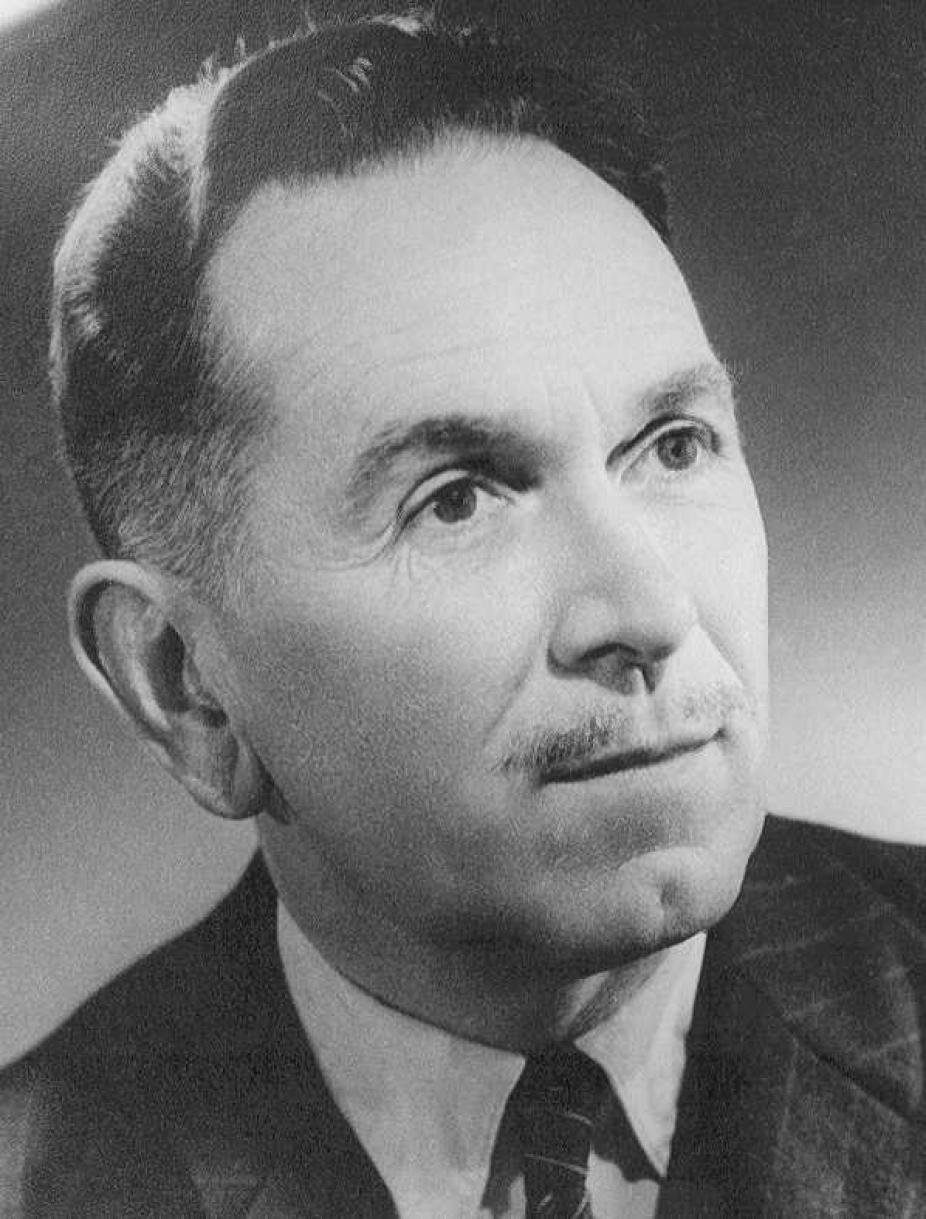Bernard Lyot (1897–1952)
Bernard Ferdinand Lyot was born in Paris on February 27, 1897. After obtaining a degree in engineering in 1918, he worked for over ten years as a demonstrator in Physics at the Ecole Polytechnique in Paris. In 1930 he took on an Astronomer position at the Observatoire de Meudon, where he had held an Assistant Astronomer appointment since 1920, and where he became Chief Astronomer in 1943.

Portrait of Bernard Lyot.
The Bruce Medalists
Lyot's first astronomical researches aimed at measuring the polarization of sunlight reflected from moons and planets, in order to infer something of their surface's composition. Not only was Lyot quite successful at this, but it is while working on Mercury that he began to contemplate ways to eliminate the glare of the solar disk while carrying out observations very close to the sun's limbs (or apparent edge as seen against the dark sky background). This led to his design of the "coronagraph", with which he obtained the first photograph of the corona ever taken outside of an eclipse on July 12, 1931 at the Observatoire du Pic-du Midi. He went on to obtain the first cinematographic movie of solar prominences. Lyot's coronagraph also allowed extensive spectroscopic studies of faint coronal lines. Lyot himself noted the surprising width of these lines, a crucial clue toward the realization that the coronal gas is much hotter than previously believed. Lyot also designed the polarization filters now bearing his name, which allow much narrower bandwidths than with conventional filters.
In 1939 he was elected to the Académie des Sciences and was awarded the Gold Medal of the Royal Astronomical Society. More honors followed with the Bruce Medal in 1947, and the Draper Medal of the U.S. National Academy of Sciences in 1952.
A modest and generous man, Lyot never failed to provide support to other scientists requesting his help in instrumental matters. He died on April 2, 1952 near Cairo, Egypt, following a heart attack suffered while returning from an expedition to observe the total solar eclipse of February 25, 1952 near Khartoum, Sudan.
Bibliography
D'Azambuja, L. 1952, L'oeuvre de Bernard Lyot, L'Astronomie, 66, 267-277.
Porter, R. (ed.) 1994, The Biographical Dictionary of Scientists, Oxford University Press.

Bernard Lyot (left), the inventor of the coronagraph, visits the HAO installation on Fremont Pass during July 1946. Earlier that year, the efforts were formally incorporated in "The High Altitude Observatory of Harvard College and the University of Colorado." HAO's first two employees were John (Jack) Wainwright Evans Jr. (center) and Walt Roberts (right).